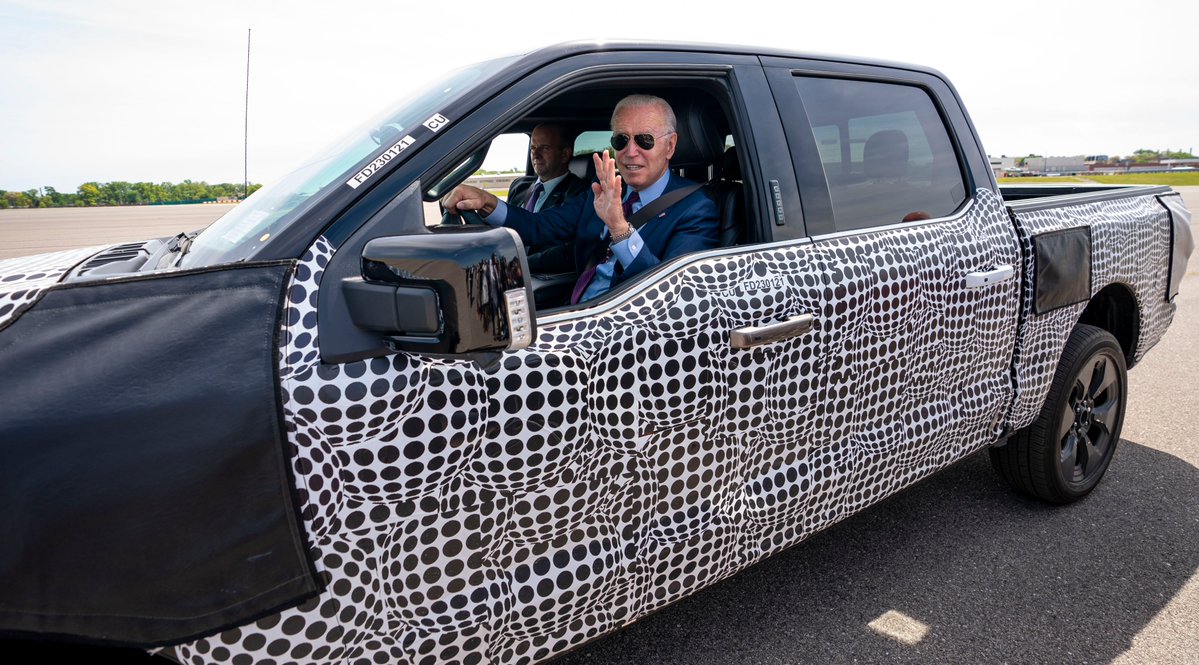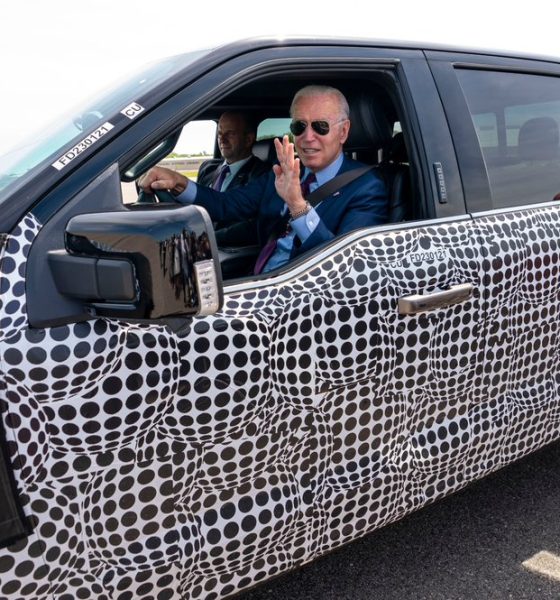

News
U.S. EV buyers will get the $7,500 tax credit with a few catches
The United States Electric Vehicle Tax Credit is one of the most notable advantages of purchasing a battery-electric car. The $7,500 check sent to buyers by the Federal Government incentivizes the purchase of sustainable passenger vehicles, so long as the company you are buying from has not sold 200,000 electrified units, which disqualifies Tesla and General Motors from the program. However, the reintroduction of the EV Tax Credit is being discussed as the Bipartisan Infrastructure Bill is moving closer to implementation, and there are a few extra stipulations that will disqualify many vehicles and many buyers from receiving the incentive check based on the cost of the car and your annual income.
A new amendment passed by the U.S. Senate on Tuesday will require the cost of the vehicle to be under $40,000. Otherwise, the car will be disqualified from the incentive program. Additionally, consumers who make more than $100,000 annually will have to say goodbye to receiving that check. As Senator Deb Fischer of Nebraska said, “Everyday Americans are living paycheck to paycheck because of the sharp rise in costs due to #Bideninflation. We shouldn’t be subsidizing luxury vehicles for the rich using money from hard-working taxpayers.”
Everyday Americans are living paycheck to paycheck because of the sharp rise in costs due to #Bideninflation. We shouldn’t be subsidizing luxury vehicles for the rich using money from hard-working taxpayers.
— Senator Deb Fischer (@SenatorFischer) August 11, 2021
The Amendment was passed in a vote of 51-48, with the difference being three Democratic Senators who voted in favor of the stipulations: Joe Manchin of West Virginia, as well as Mark Kelly and Kyrsten Sinema of Arizona, according to ArsTechnica.
The rollout of electric vehicles is supported by the current President Joe Biden, who attempted to increase the United States’ EV sales goals of GM, Ford, and Stellantis to 40% by 2030. Instead, each automaker pledged to a 50% margin following Biden’s executive order, supporting the highly-anticipated release of more electrified models from these three legacy automakers.
The future of the auto industry is electric — and made in America.
Today I’m signing an executive order with a goal to make 50% of new vehicles sold by 2030 zero-emission — and unveiling steps to reverse the previous administration’s short-sighted rollback of vehicle standards.
— President Biden (@POTUS) August 5, 2021
The Infrastructure Bill has set aside $7.5 billion for EV charging infrastructure, which many automakers, including Tesla, will qualify for as long as multiple car companies can use the chargers.
Earlier this year, a $12,500 EV tax credit was discussed. The new amount and requirements would have removed the cap limit on how many vehicles could be sold by the manufacturer before the credit would disappear. Apart of the “Clean Energy for America” Bill, the credit would apply to cars that were less than $80,000. The full $12,500 would be earned in increments: $7,500 for the electric vehicle, an additional $2,500 for vehicles assembled within the United States, and another potential $2,500 for cars built at production facilities whose workers are members of or are represented by a labor union.
The sub-$40,000 requirement for the EV tax credit would eliminate many vehicles from the running, including all but one of Tesla’s cars. Only the Model 3 SR+, starting at $39,990, would qualify for this incentive. It is unknown how the $40,000 price point was used to determine what vehicles should and should not qualify for the incentive, but according to Kelley Blue Book, the average cost of a vehicle in the U.S. when brand new is $40,957.
Bipartisan Infrastructure Bill by Joey Klender
What do you think? Let us know in the comments below, or be sure to email me at joey@teslarati.com or on Twitter @KlenderJoey.

News
Tesla China delivery centers look packed as 2025 comes to a close
Needless to say, it appears that Tesla China seems intent on ending 2025 on a strong note.

Tesla’s delivery centers in China seem to be absolutely packed as the final days of 2025 wind down, with photos on social media showing delivery locations being filled wall-to-wall with vehicles waiting for their new owners.
Needless to say, it appears that Tesla China seems intent on ending 2025 on a strong note.
Full delivery center hints at year-end demand surge
A recent image from a Chinese delivery center posted by industry watcher @Tslachan on X revealed rows upon rows of freshly prepared Model Y and Model 3 units, some of which were adorned with red bows and teddy bears. Some customers also seem to be looking over their vehicles with Tesla delivery staff.
The images hint at a strong year-end push to clear inventory and deliver as many vehicles as possible. Interestingly enough, several Model Y L vehicles could be seen in the photos, hinting at the demand for the extended wheelbase-six seat variant of the best-selling all-electric crossover.
Strong demand in China
Consumer demand for the Model Y and Model 3 in China seems to be quite notable. This could be inferred from the estimated delivery dates for the Model 3 and Model Y, which have been extended to February 2026 for several variants. Apart from this, the Model Y and Model 3 also continue to rank well in China’s premium EV segment.
From January to November alone, the Model Y took China’s number one spot in the RMB 200,000-RMB 300,000 segment for electric vehicles, selling 359,463 units. The Model 3 sedan took third place, selling 172,392. This is quite impressive considering that both the Model Y and Model 3 are still priced at a premium compared to some of their rivals, such as the Xiaomi SU7 and YU7.
With delivery centers in December being quite busy, it does seem like Tesla China will end the year on a strong note once more.
News
Tesla Giga Berlin draws “red line” over IG Metall union’s 35-hour week demands
Factory manager André Thierig has drawn a “red line” against reducing Giga Berlin’s workweek to 35 hours, while highlighting that Tesla has actually increased its workers’ salaries more substantially than other carmakers in the country.

Tesla Giga Berlin has found itself in a new labor dispute in Germany, where union IG Metall is pushing for adoption of a collective agreement to boost wages and implement changes, such as a 35-hour workweek.
In a comment, Giga Berlin manager André Thierig drew a “red line” against reducing Giga Berlin’s workweek to 35 hours, while highlighting that Tesla has actually increased its workers’ salaries more substantially than other carmakers in the country.
Tesla factory manager’s “red line”
Tesla Germany is expected to hold a works council election in 2026, which André Thierig considers very important. As per the Giga Berlin plant manager, Giga Berlin’s plant expansion plans might be put on hold if the election favors the union. He also spoke against some of the changes that IG Metall is seeking to implement in the factory, like a 35-hour week, as noted in an rbb24 report.
“The discussion about a 35-hour week is a red line for me. We will not cross it,” Theirig said.
“(The election) will determine whether we can continue our successful path in the future in an independent, flexible, and unbureaucratic manner. Personally, I cannot imagine that the decision-makers in the USA will continue to push ahead with the factory expansion if the election results favor IG Metall.”
Giga Berlin’s wage increase
IG Metall district manager Jan Otto told the German news agency DPA that without a collective agreement, Tesla’s wages remain significantly below levels at other German car factories. He noted the company excuses this by referencing its lowest pay grade, but added: “The two lowest pay grades are not even used in car factories.”
In response, Tesla noted that it has raised the wages of Gigafactory Berlin’s workers more than their German competitors. Thierig noted that with a collective agreement, Giga Berlin’s workers would have seen a 2% wage increase this year. But thanks to Tesla not being unionized, Gigafactory Berlin workers were able to receive a 4% increase, as noted in a CarUp report.
“There was a wage increase of 2% this year in the current collective agreement. Because we are in a different economic situation than the industry as a whole, we were able to double the wages – by 4%. Since production started, this corresponds to a wage increase of more than 25% in less than four years,” Thierig stated.
News
Tesla is seeing a lot of momentum from young Koreans in their 20s-30s: report
From January to November, young buyers purchased over 21,000 Teslas, putting it far ahead of fellow imported rivals like BMW and Mercedes-Benz.

Tesla has captured the hearts of South Korea’s 20s-30s demographic, emerging as the group’s top-selling imported car brand in 2025. From January to November, young buyers purchased over 21,000 Teslas, putting it far ahead of fellow imported rivals like BMW and Mercedes-Benz.
Industry experts cited by The Economist attributed this “Tesla frenzy” to fandom culture, where buyers prioritize the brand over traditional car attributes, similar to snapping up the latest iPhone.
Model Y dominates among young buyers
Data from the Korea Imported Automobile Association showed that Tesla sold 21,757 vehicles to the 20s-30s demographic through November, compared to BMW’s 13,666 and Mercedes-Benz’s 6,983. The Model Y led the list overwhelmingly, with variants like the standard and Long Range models topping purchases for both young men and women.
Young men bought around 16,000 Teslas, mostly Model Y (over 15,000 units), followed by Model 3. Young women followed a similar pattern, favoring Model Y (3,888 units) and Model 3 (1,083 units). The Cybertruck saw minimal sales in this group.
The Model Y’s appeal lies in its family-friendly SUV design, 400-500 km range, quick acceleration, and spacious cargo, which is ideal for commuting and leisure. The Model 3, on the other hand, serves as an accessible entry point with lower pricing, which is valuable considering the country’s EV subsidies.
The Tesla boom
Experts described Tesla’s popularity as “fandom culture,” where young buyers embrace the brand despite criticisms from skeptics. Professor Lee Ho-geun called Tesla a “typical early adopter brand,” comparing purchases to iPhones.
Professor Kim Pil-soo noted that young people view Tesla more as a gadget than a car, and they are likely drawn by marketing, subsidies, and perceived value. They also tend to overlook news of numerous recalls, which are mostly over-the-air software updates, and controversies tied to the company.
Tesla’s position as Korea’s top import for 2025 seems secured. As noted by the publication, Tesla’s December sales figures have not been reported yet, but market analysts have suggested that Tesla has all but secured the top spot among the country’s imported cars this year.








